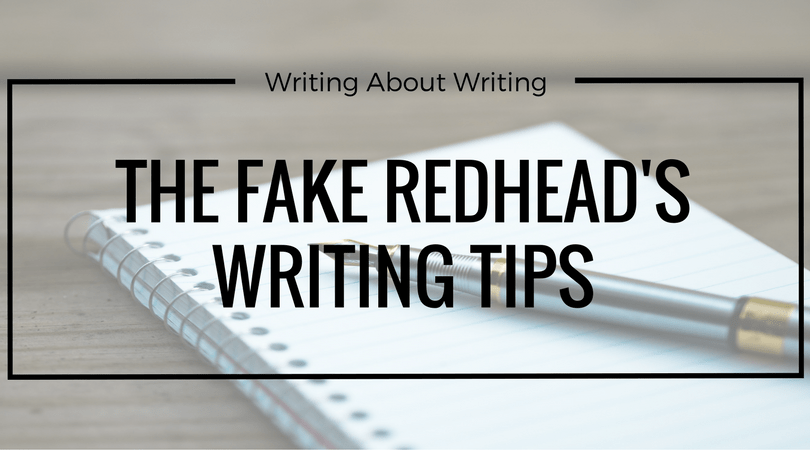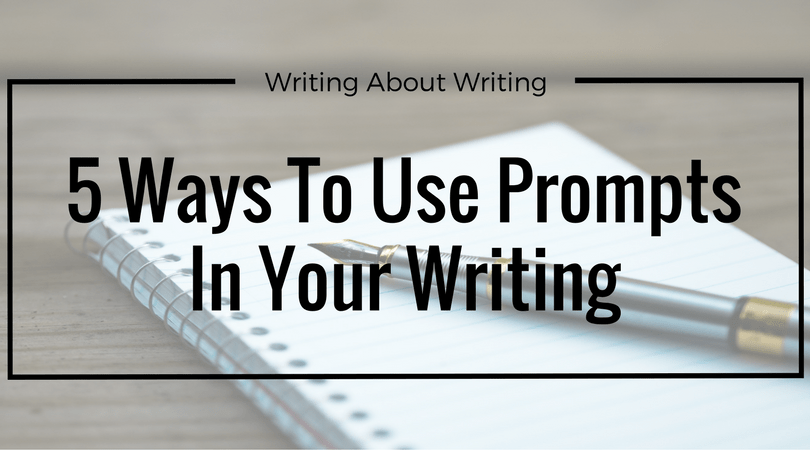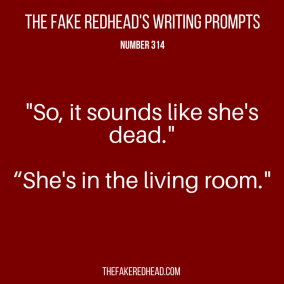Writing Tips | Find Your Next Favorite Book | Prompt Library | Shop The eBooks
Write What You FEEL
Because of reasons, I’m going to dive back into the importance of “show, not tell”.
What are the reasons? Well, I’m not going to talk about it because I don’t want to traumatize my readership, but if you hop on to my Twitter and scroll back a few days, you’ll see some nooooooooooo gifs with the hashtag #AllTheBoats.
That’s my vague reaction to what I was suffering through, and what inspired me to draft this post.
Ugh.
Moving on.
Showing, not telling is CRUCIAL for your story.
Why?
Well for me, I’m incredibly stubborn.
You can’t just TELL me to do something or TELL me to feel a certain way. Especially if I don’t respect you (and as an author our job is to build respect with our readers), I’m probably either going to NOT listen to you or very vocally demand that I get a viable explanation about why you think whatever it is is important for me to do or think.
When it comes to writing, it is your job as an author to make your readers BELIEVE in what you’re showing them.
And to make your readers believe what you believe, you have to SHOW them. You can’t just tell them what to do or to feel. If you do, then they’re not going to get very far in your story.
So, click the Continue Reading button for some tips on how to infuse more SHOW into your story so you can take your readers on a ride in a way that encourages them to keep turning the page.
Show Me How I Should Feel, Don’t Tell Me
Let’s talk about panic attacks.
Not a fun subject, but panic attacks are a thing that I sometimes have, because my brain is a dick.
But to take something really shitty, turn it on its head, and make it into something positive, I can take what I know about panic attacks and reacting to them and use that in my writing. If I need to craft a scene where a character is having a panic attack, then I know exactly where to draw my inspiration from.
Now, your panic attack is probably different from MY panic attack, and if you don’t get panic attacks but know that panic attacks are a thing, there are going to be three different depictions of panic attacks, depending on who’s writing the story.
So, instead of writing, “and then so-and-so started panicking,” I would write a scene where I describe the way the character has trouble breathing. Or the way the room starts feeling like it’s closing in and their hands start to shake.
I’ve said it before and I’ll say it again, but the best way to evoke emotion and to show your readers how you want them to feel is to focus on the little things. Get very specific. A panic attack is a very macro term for a BUNCH of micro incidents that build upon one another until your character drops into this figurative bed of inability to function.
But enough about panic attacks.
Let’s talk about excitement.
Pro tip: when your character is excited, don’t convey it by saying something like, so-and-so is excited.
Just don’t. That’s telling.
Now, everyone’s scope of emotions are different, but mine tends to run on incredible neutrality except for the times in my life where I get super pissed off. Things like genuine excitement and appreciation are things that I have trouble conveying.
I never learned how to do all that properly.
But when I get excited about something it’s a spectacle. Ask me to talk about my favorite aspect of Power Rangers or why feminism is incredibly important, and I can talk your ear off. Also, ask me my feelings about Olympic sports record keeping in college athletics and you will probably regret it immediately, because I don’t know how to stop when I start in on stuff like that.
And these are all things that I infuse into my writing. They say, “write what you know,” and that’s really the easiest way to build in the little things like emotion, which takes your story from a bunch of words where things happen to an adventure where your reader wants to keep going and keep reading so they can see what happens next.
Are you trying to convey an emotion you don’t know much about? Google is a great place to start. But that will only take you so far. I know there’s been a lot of talk about things like Sensitivity Readers and Critique Partners and the like, and they really do make a positive impact in your work. They know what you’re trying to talk about, and they are a fantastic resource.
Find someone who knows more about what you don’t and pick their brain. Don’t rely on the usual stereotypes. Sometimes they’re right, but mostly they’re wrong. These people want to help others showcase whatever they know in the best light, and most importantly, they want it to be accurate.
As a former record-keeper, I am all about accuracy.
And be prepared to have to scrap a portion of whatever you’ve written because you’ve been told that it’s inaccurate or harmful. When you don’t know something, and you’re approached by someone who does, then your answer has to be, “How do I fix it? How do I make it better?”
I’ve lost the plot a bit, so back to the point is that you want to take your readers on a ride, and the best way to do it is to show them how your characters are feeling. Showing that helps your readers relate to what you’ve written (unless they’re a sociopath, but a sociopath is probably not looking to read your book).
Don’t tell your readers how to feel. They’re going to be turned off a bit, or a lot. But if you show them how you want them to feel, then they’re going to build a rapport with your work and want to see more from you.
And more is always better.
Check Out The Last Writing Tip Check Out The Next Writing Tip
Shop The eBooks | Find Your Next Favorite Book
Want more prompts? Check out the Prompt Library.
Do you have a question about writing that you want me to answer? Leave a comment below! (I’m also answering questions in the Facebook group. Hop on over and say hi!)








Hi there! Per your earlier permission, I scheduled this article to be featured as a guest post on http://www.ryanlanz.com on July 16th. As usual, it has your credit/bio/link. Thanks!
Awesome! Thanks!